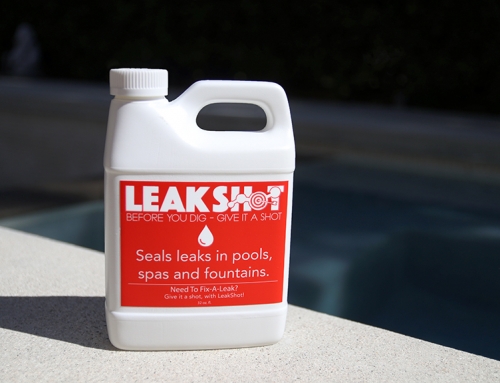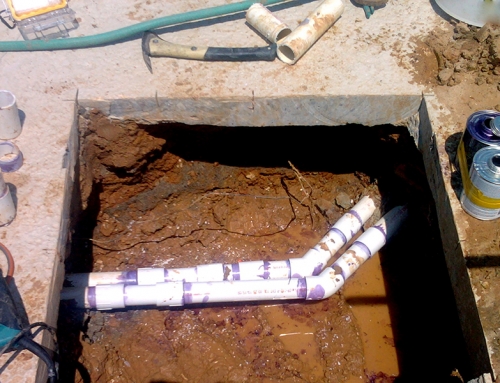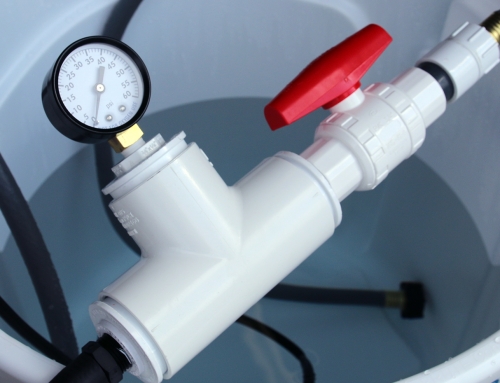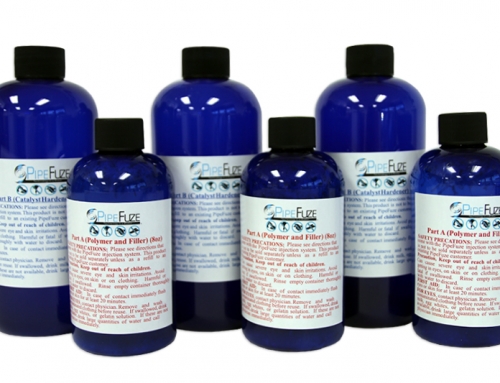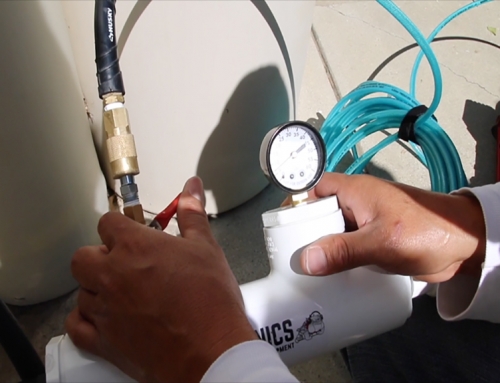Pipes running under patios are subject to cracks due to a number of reasons. Ground movement, pressure, pools shifting just the slightest of bits – but the leaks typically happen in a place where simple repairs aren’t going to be made by digging. Digging often involves breaking and restoring concrete and making mismatched patches and surface colors that nobody wants. Provided the pipe leaks meets some small criteria, PipeFuze offers a repair option that doesn’t involve digging, breaking concrete or large expenses.
PipeFuze is a liquid polymer base that fills cracks and forms a solid bond that adheres to the area where cracks occur. It penetrates the crack and forms a seal both inside and outside of the pipe, filling the crack and creating a permanent bond that stops water loss. The criteria for this to have the best results is simple. Is the pipe losing 5lbs of pressure or less over a 30 second time span. If the answer is yes, order PipeFuze today.
When complete separations and breaks that encircle the full diameter of a pipe occur, pressure in the pipe is virtually null. You can see on a pressure gauge that the volume of water in the pipe is rapidly escaping it and the pipe holds no pressure at all. This will lead a home owner or pool owner to have a professional leak detection performed, and the concrete broken to get at the area of the leak to make repairs. No coagulant on the planet will seal a complete pipe separation.
By knowing that a leak is giving a pressure loss as described above, this means there is consistent resistance to the water escaping the pipe. It has a crack, or a space where water is going out, but the pipe is not completely separated. This gap can be filled and sealed with PipeFuze.
PipeFuze consists of two liquids that each perform a specific job. They are labelled Part A and Part B. Part A includes a liquid polymer solution combined with a particulate that will create a damming effect at the area of the leak. When applied to the pipe, flowing at a low pressure, just 8lbs will do, the liquid will disperse the particulates and the viscous fund will be pulled into the area where the leak occurs. When injecting the first bottle of Part A, it is likely that the smaller particulates will be drawn through the crack first. This is why each application of PipeFuze includes 3 bottle each of both liquid parts. Pipes with a wider diameter are often referred to apply 2 bottles of part A to begin with, where standard inch and a half pool piping can start with a single bottle.
During the process, you may see the level of water being circulated drop in the bucket you use to apply the picture. This is because the leak still occurs and it takes time to heal. Over the first hour of cycling the fluids through the pipe, the rate of water loss will likely visually decrease. You’ll have to add less water until you see that the water drop isn’t happening at all. After two hours of cycling Part A through the pipe, you will most likely see that there isn’t any water loss. Performing a slight 5lb pressure test on the line will confirm that the pipe is holding pressure. If a slight amount of pressure is still being lost, continue to cycle Part A for another hour. If you see less small particulate circulating, add another bottle of Part A to reintroduce the smaller particulate to the mix. This smaller particulate will take in any gaps between the pieces that have already settled into the crack.
The the crack fills, the viscous fluid in the mix will start to harden from outside of the pipe. Because there is no water flow through the crack, the air outside of the pipe will start the self-hardening process of the polymer fluid. It will begin to harden its way into the crack.
Because the pipe is filled with fluid, there isn’t a way to air-dry and self-harden the fluid inside of the pipe without adding a catalyst. That catalyst is Part B of the fluid sets. Circulate Part B into the pipe for an hour. As Part B of the fluid set makes contact with the Part A fluid that is starting to harden and gather in the crack, it will aid in the Part A fluid conforming to a gummy, more gelatin form. When the thicker form meets the area hardening from outside of the pipe, it will accelerate that process, hardening the fluid throughout the entire crack, adhering to both the inside and the outside of the pipe. This permanent bond will stay in place when normal water pressure and flow is administered through the system and the leak will no longer be an issue.
Learn more about how PipeFuze is injected and pipes are repaired without digging and order your PipeFuze kit today.

